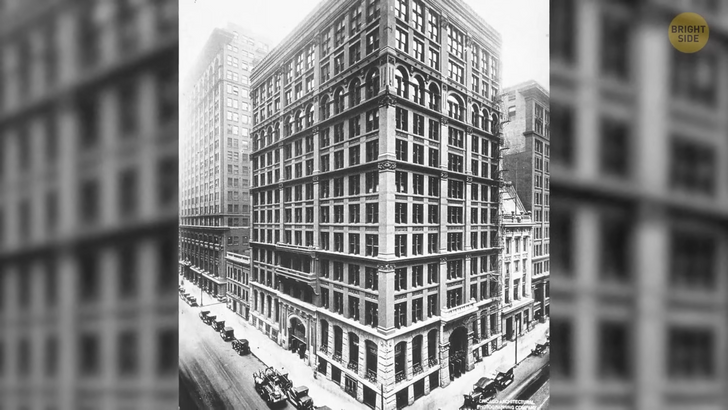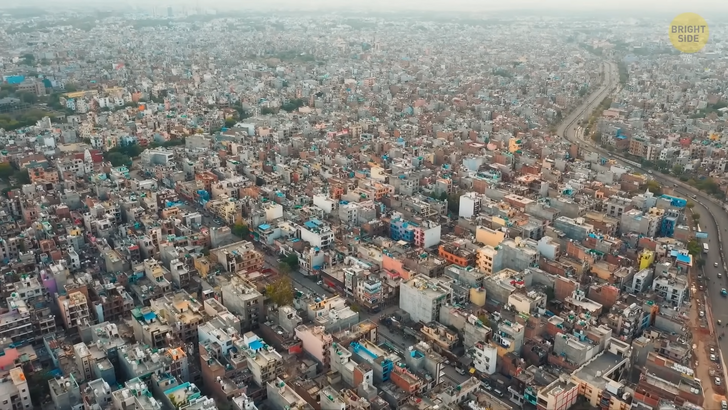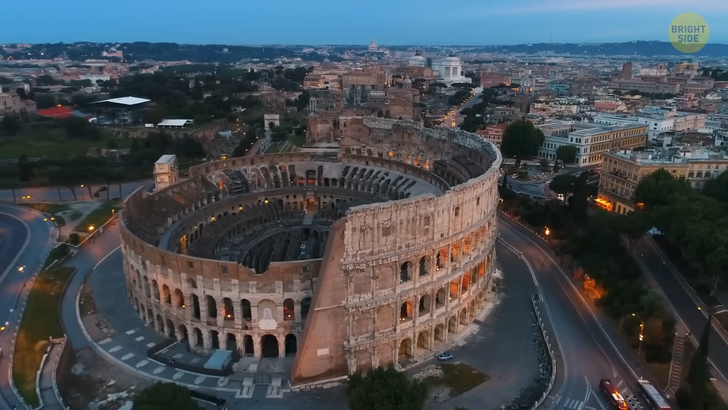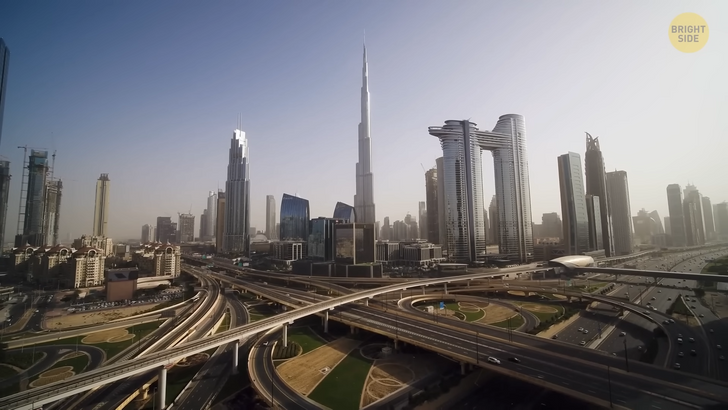A Look Inside the Life of One the Quietest Stars, Cillian Murphy, Who Actually Hates Being Famous

It all started with the Home Insurance Building that was built in 1885 in Chicago. Just a ten-story building, but it was a revolution at the time, and that was the beginning of the era of skyscrapers. It was constructed using a revolutionary method: the building had an inner skeleton made of steel, which allowed the walls to be thinner and the whole structure being higher than ever.

It stood until 1931, when it was demolished to build the Bank of America that stands even today. That very same year, the construction of the Empire State Building in New York was completed. The Empire State is as tall as ten Home Insurance Buildings on top of one another. That’s the construction progress humanity made in just 46 years! The Empire State became the tallest construction in the world and held that status for 39 years. Now, a bit more than half a century later, the Empire State Building is ranked 53 on the list of the tallest constructions.
Humanity has climbed way higher. The tallest building in the world today is Burj Khalifa, located in Dubai, in the United Arab Emirates. It’s 2,717 feet tall — more than two Empire State buildings on top of one another. Even though skyscrapers started out in the United States, they became tremendously popular in Asia. Just to put it into perspective: around 80% of the skyscrapers that exist in the world are in Asia. And, in total, the continent has over 7,500 skyscrapers.
The country with the most skyscrapers is China, having almost 3,000 of them. Why do they like skyscrapers so much? Well, Asia has the largest population in the world, and their economy is boosting. So, growing high is a perfect solution to fit as many people as possible in its cities.
But, close to China, there’s also India, having almost the same population. Still, they have ten times fewer skyscrapers, with their number being a bit over 200, and most of them being located in Mumbai. So why doesn’t India build skyscrapers if it’s such a great way to accommodate people?

Turns out, the country strictly regulates the construction, saying that it’s due to health and safety. You see, there’s quite a popular urban theory that big structures that accommodate a lot of people lead to higher population density, more anonymity in the city, and lower safety in the territory. So, India is trying to avoid it by building low.
The problem is that when a city can’t accommodate everyone who wants to live there, the cities start growing horizontally. One more thing is that the land and the apartments are very expensive due to their scarcity, so very few people can afford it. This way, India has started to loosen the restrictions recently and is now slowly allowing to build a bit higher. 34 skyscrapers are now under construction.
Do you know what other place in the world refuses to build skyscrapers too? Europe. New York alone has more skyscrapers than all of Europe combined. There are just 250 skyscrapers in Europe, and half of them are in just three cities. Europe has a whole different reason to resist tall buildings.
The history of skyscrapers goes back just a bit over a hundred years ago, to the 20th century USA. The USA is quite a young country, and the cities are still being built from scratch: there is a lot of available land. When the United States was being built, many European cities had already been around for dozens of centuries.

There is not much more room for construction, and no one has any desire to take down the Colosseum and put some fancy skyscraper there instead. There was also no practical reason for changing things. The driving force of Asian and American skyscrapers is the booming population of the cities.
Also, Europeans are very protective of their city skylines. The story comes to Brussels, the capital of Belgium, which even got the term “Brusselization”. In the 1960s, there were no zoning regulations, and some buildings in Brussels were demolished to make room for more modern buildings to develop business districts.
Uncontrollable construction started, and modern buildings were built in random places around Brussels. They had no cultural or historical value, and they didn’t fit in the city architecture at all, messing up the city’s image. Many architects and people protested, and new laws were introduced, restricting the demolition of buildings of historical importance and taking construction under control.
Other European countries learned from Belgium’s mistakes. The population across Europe still dislikes modern structures. Many cities adopted zoning regulations and building a fancy glass skyscraper in Europe isn’t that easy.

Still, cities with big financial centers, like London, Frankfurt or Istanbul require commercial space. So, in some cities, there are several skyscrapers somewhere outside the historic centers, forming separate skyscraper districts. Rome, the capital of Italy, and one of the oldest cities in the world, rejected skyscrapers completely, stating that no high-rise will ever appear there. Also, have you noticed that most skyscrapers are made of glass? Turns out, the choice is not random at all, and there are several reasons to favor glass in their construction.
The first one is that glass can be pressed in every shape possible. So, the skyscraper can no longer be just a plain boring vertical tower as before, but all of these fancy designs we have around the world now. The second reason is that glass is a very thin material. The walls are thinner, and the floors are bigger, providing more inner space, unlike in the pre-Home Insurance Building times.
Glass is also pretty light and allows the construction to be very high. Being transparent, glass reduces the need for electrical lighting inside the building, so it’s also very cost-effective. Even more, glass is temperature and therefore weather resistant. And, finally, it just looks posh, fancy, and modern.

So, theoretically, skyscrapers maximize urban space, accommodate more people, and reduce energy use. In practice, everything is a bit less efficient. Skyscrapers have more space between them than lower buildings, so that already means more land used than we imagined.
Also, around 40% of a skyscraper’s floor space isn’t accommodated, because it’s used for elevator shafts and emergency egress. Every additional floor adds less floor space than the previous one. As for the energy, skyscrapers still require a lot of it to heat and cool, and we shouldn’t forget about the energy elevators use.
Okay, now let’s find out what are the countries with the biggest number of skyscrapers in the world. I’ll give you the top-15.

So, number 15 is Panama, with 66 skyscrapers there. Number 14 — with 67 skyscrapers — is Turkey. 13th place goes to Singapore — they have 95 skyscrapers. Then there goes India, with 112 of them. And quite a few of those were build in recent years, so that’s a big jump they made. Next up, 122 skyscrapers — the Philippines.
Thailand opens the top 10 with 125 skyscrapers. Canada surpasses it a bit, having 126. 8th place goes to Indonesia which has 129. Australia is home to 141 of them and gets 7th place. Level up — now we’re talking 266, and it’s Malaysia. Japan beats it by just five and opens the top 5. Number four is, no surprise, another Asian country — it’s South Korea, with 276 skyscrapers. The United Arab Emirates make it to the top 3, with 314 buildings.
Now we all know the two countries with the biggest number of skyscrapers if you’ve been attentive today. Yes, the second place goes to the founding father of skyscrapers — the United States of America. They have 859 of them. That’s a big jump from third place. But there’s an even bigger one. With 2,976 skyscrapers, the first place goes to China. Nine countries in the top 15 are Asian, three countries are from the Americas, one in the Middle East, one in Europe, and one in Australia.











